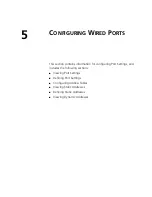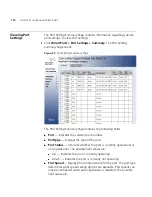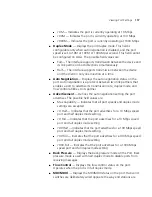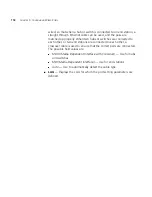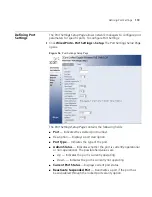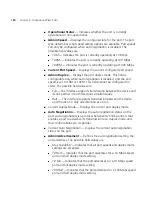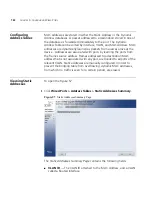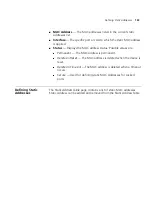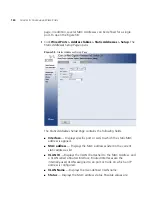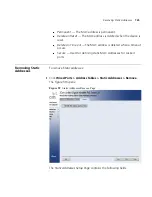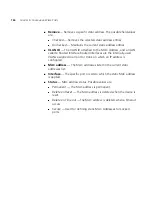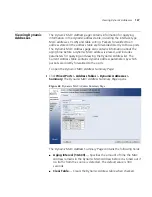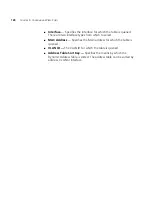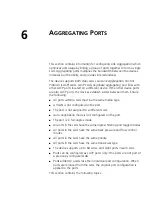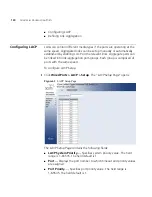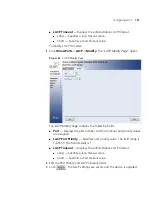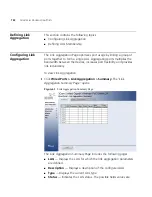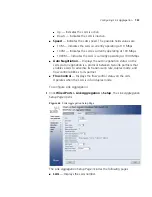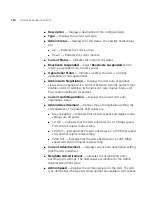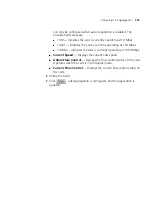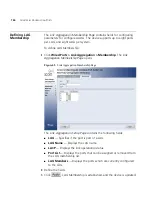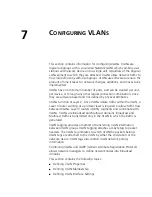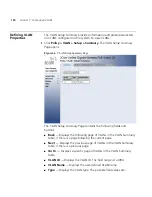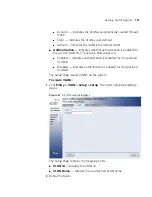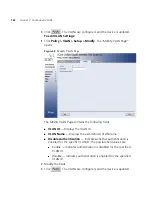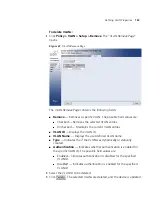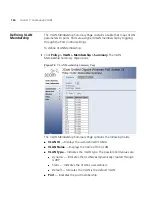
6
A
GGREGATING
P
ORTS
This section contains information for configuring Link Aggregation which
optimizes port usage by linking a group of ports together to form a single
LAG. Aggregating ports multiplies the bandwidth between the devices,
increases port flexibility, and provides link redundancy.
The device supports both static LAGs and
Link Aggregation Control
Protocol
(LACP) LAGs. LACP LAGs negotiate aggregating port links with
other LACP ports located on a different device. If the other device ports
are also LACP ports, the devices establish a LAG between them. Ensure
the following:
■
All ports within a LAG must be the same media type.
■
A VLAN is not configured on the port.
■
The port is not assigned to a different LAG.
■
Auto-negotiation mode is not configured on the port.
■
The port is in full-duplex mode.
■
All ports in the LAG have the same ingress filtering and tagged modes.
■
All ports in the LAG have the same back pressure and flow control
modes.
■
All ports in the LAG have the same priority.
■
All ports in the LAG have the same transceiver type.
■
The device supports up to 64 LAGs, and eight ports in each LAG.
■
Ports can be configured as LACP ports only if the ports are not part of
a previously configured LAG.
■
Ports added to a LAG lose their individual port configuration. When
ports are removed from the LAG, the original port configuration is
applied to the ports.
This section contains the following topics:
Summary of Contents for 3CRUS2475 24
Page 137: ...Defining LAG Membership 137...
Page 139: ...139 Defining Voice VLAN Defining GVRP...
Page 194: ...194 CHAPTER 9 CONFIGURING IP INFORMATION Static Indicates the ARP entry is a static entry...
Page 197: ...Defining ARP Interface Settings 197 Unchecked Maintains the current ARP entries...
Page 321: ...320 APPENDIX C TROUBLESHOOTING...
Page 329: ...328 APPENDIX GLOSSARY...

